Wrecks
SHIPWRECKS ON THE BYRON COAST PRIOR TO BUILDING THE CAPE BYRON LIGHTHOUSE
There are several large rivers, such as the Tweed, Richmond and Clarence Rivers, and many smaller rivers along the strip of coastline stretching north from Byron Bay to the Queensland border and south to Coffs Harbour. At the time of European settlement some of these rivers were navigable and some could support river ports. However, there were no natural safe coastal harbours or easy refuge in storms. Ships traveling along this coast carrying cargo and passengers were required to risk crossing the shifting sandbars at the mouth of these rivers to load and unload or to do this from the beaches. In bad weather and storms ships could attempt to “ride it out” or to shelter in any lee available or try to run up the rivers. Captain John Oxley describes the stern of a large oaken sailing ship wrecked at the mouth of the Tweed River in 1823. Byron Bay was the best deep water shelter along this stretch of coast but provided no safe harbour from gales from the north or west.
To compound the difficulty for the increasing number of ships sailing along and servicing this stretch of coast it was not until the 1880’s that most river ports were built, accurate marine charts became available and navigation lights were installed. Remember that shipping was the only transport option for this part of the world until the mid-1890’s.
This resulted in many “narrow escapes”, numerous groundings, many ships being wrecked and some true disasters along the shores of the Byron Shire. Up until the Cape Byron lighthouse began operation in December 1901 the records of the NSW Heritage Office show details of 13 ships lost around Cape Byron. Other sources identify three more.
- 1849 the Swift ran ashore at Brunswick River after being blown south from the Tweed River. Five lives were lost but two passengers miraculously survived. They were cut from the overturned hull with an axe after people walking along the beach recovered from their surprise when their knocks on the upturned hull stranded on the beach were answered by the two trapped inside.
- 1864 the Volunteer was wrecked on Cape Byron in a gale with all lives lost and its cargo of tallow was washed up on the shore.
- 1875 the Andrew Fenwick with a cargo of flour was wrecked on a beach just north of Cape Byron and the Miranda was wrecked at Cape Byron.
- 1876 the William was wrecked in a gale near Byron Bay sailing to load cedar here and the Brilliant was wrecked at Cape Byron but subsequently salvaged only to be wrecked and abandoned on the beach south of Brunswick Heads in 1884.
- 1879 the Inglis was lost when loading timber off the beach south of Brunswick River and was driven ashore at Byron Bay.
- 1886 the Jane was washed ashore at Tallow Beach in a gale while waiting to load timber and the Condong foundered near Cape Byron
- 1889 five ships, Agnes, Bannockburn, Fawn, Hastings and Spurwing were blown ashore on Belongil Beach during an extreme storm. Of these only the Agnes was refloated; the others being wrecks. The anchor of the Fawn has been recovered and is on display in town.
- 1890 the Agnes was wrecked again this time north of the Brunswick River with eight lives lost.
- 1891 the Anne Theresa sprang a leak after bumping the ground and forced to run aground at Byron Bay.
- 1893 the Tweed carrying a load of supplies for the new railway line being built at Byron Bay was wrecked on the shore at Byron Bay when seas disabled its rudder.
- 1894 the Tuggerah was wrecked in Byron Bay when its anchors failed to hold.
That there were other unrecorded wrecks is evidenced by the discovery of an old wooden rudder buried six metres under the sand at the southern end of Tallow Beach by sand miners in 1965. This discovery made headlines around the world when initial carbon dating of timber from the wreck yielded an age between 1450’s and 1660’s with a most likely age of 1551 meaning it predated Captain Cook’s discovery voyage of 1770. This date was later shown to be incorrect and the wreck to be from the 1880’s.
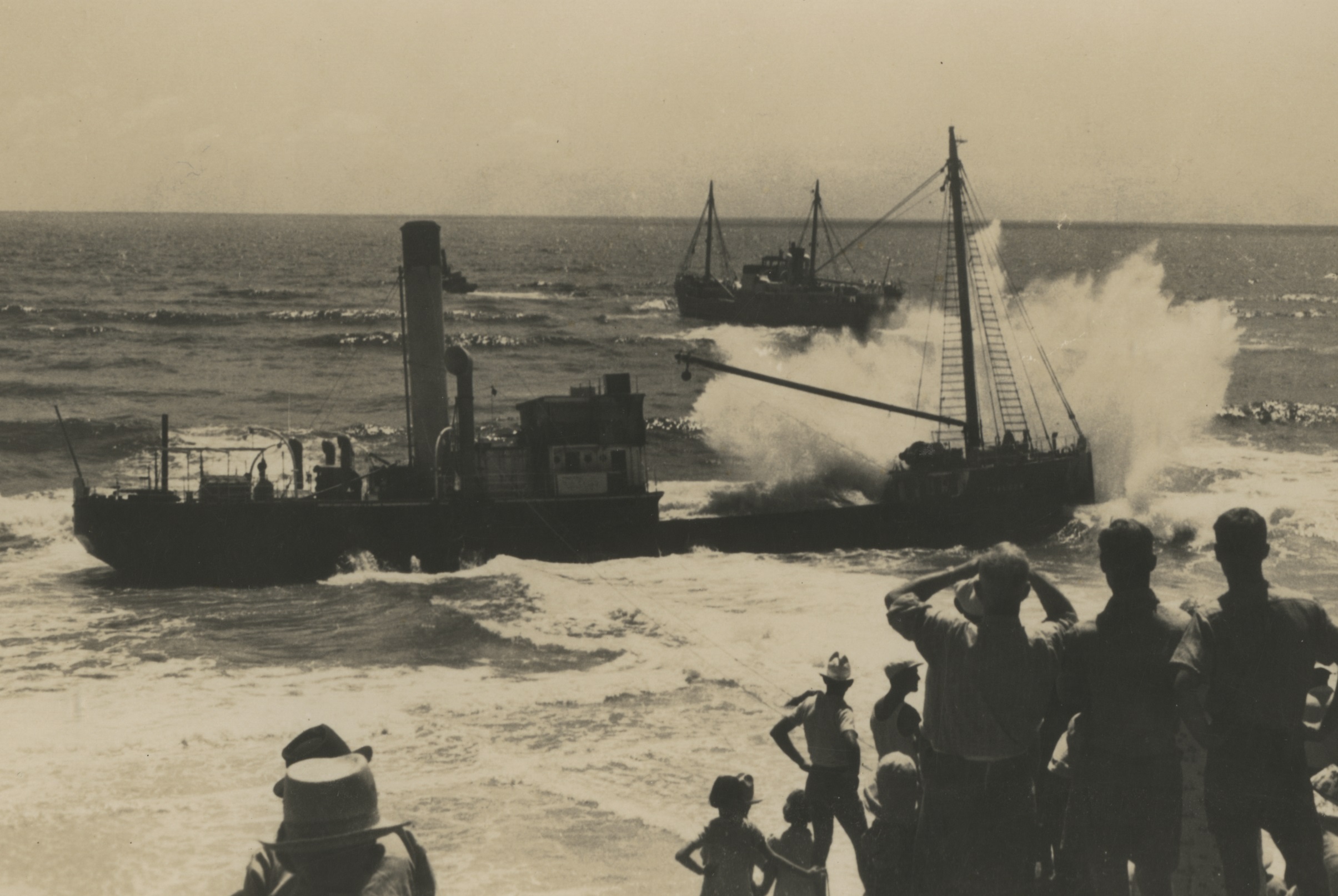
The Tyalgum on the rocks 1939. (Source – EJW – RTRL)
TALLOW BEACH
Up until 1864 the beautiful seven kilometre long stretch of beach extending south from Cape Byron to Broken Head was unnamed. It became Tallow Beach that year after a large amount of tallow (rendered animal fat – but usually beef or mutton fat) highly valued at that time to make soap, candles and lubricants was washed up on the shores of the beaches either side of Cape Byron.
It represented the cargo of the 100 tonne schooner Volunteer that was sailing from Baffle Creek in Queensland to Sydney carrying 114 casks of tallow. The ship was caught in an easterly gale as it passed Cape Byron in the night and was driven on to the jagged rocks at the foot of the Cape and totally wrecked with the loss of all lives.
Some of the tallow was washed ashore still in the original casks and was later salvaged and “exported” from the beach. The contents of the broken casks floated and came ashore as small pieces and lumps where it melted in the hot sun, coated the sand grains and pebbles then solidified in the cool nights or when covered by sea water until it eventually decomposed. Hence the name Tallow Beach. Tallow is now used to make biodiesel.
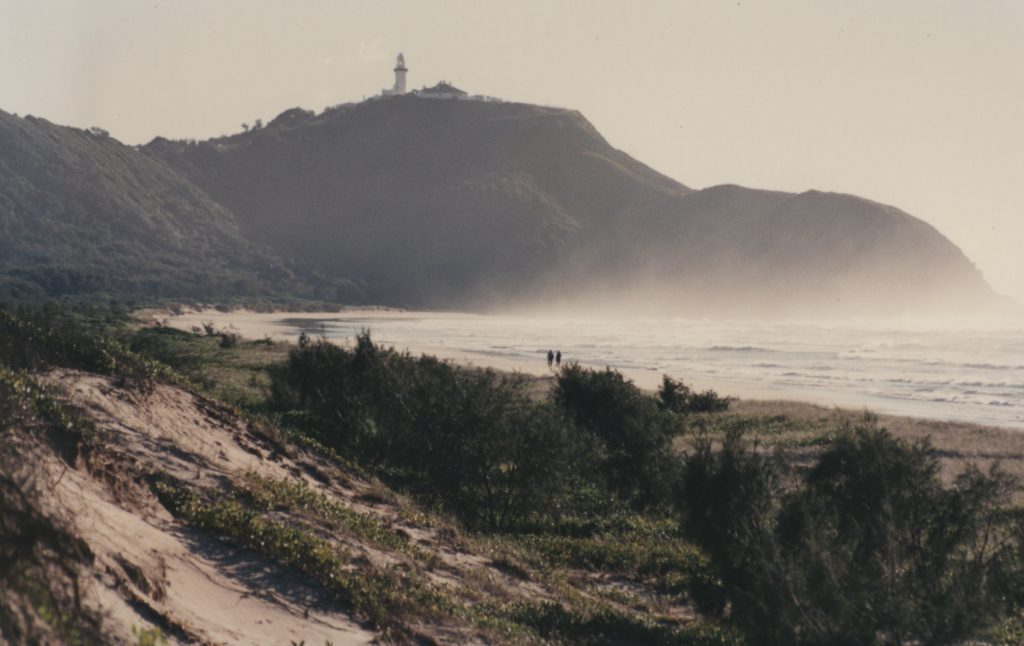
Tallow Beach (Source – EJW – RTRL)
Two intermittent water courses, Tallow Creek and Ti-tree Creek cross the beach draining dark brown lagoons behind the dunes. Until tracks and roads were established inland in the 1880’s it served as part of the main coastal “highway” for horse-back travellers to and from the Richmond and Tweed Rivers. The first cattle and dairy cows were driven from the Richmond River to Byron Bay along it challenging their herders as they crossed the heavily timbered and rugged headlands separating the long beaches from one another.
This strip of sand has seen timber loaded from it, gold and mineral sand mined from it, hang gliders land on it and fish caught off it. It is good for walking, running and biking along, sun-bathing, playing and meditating on as well as swimming, surfing and fishing from. Ghost crabs build their characteristic sand-ball patterns and scurry around at night. Many birds feed and rest on it and a few build their nests on the edges of it. Occasionally large sea mammals are washed up on it to decompose and provide food for scavengers. Wallabies leave their characteristic tracks in the soft sand for early morning walkers to find. The northern half of Tallow Beach is now included in the Arakwal National Park.
WRECK OF THE WOLLONGBAR
The most significant shipwreck to occur in Byron Bay was that of the 2000 tonne Wollongbar on 14 May 1921. This ship was built for the North Coast Steamship Navigation Company in 1911 to provide regular scheduled passenger and freight transport between Sydney and Byron Bay. Although other smaller ships, such as the Orara owned by the same company, provided similar service the Wollongbar was the most important.
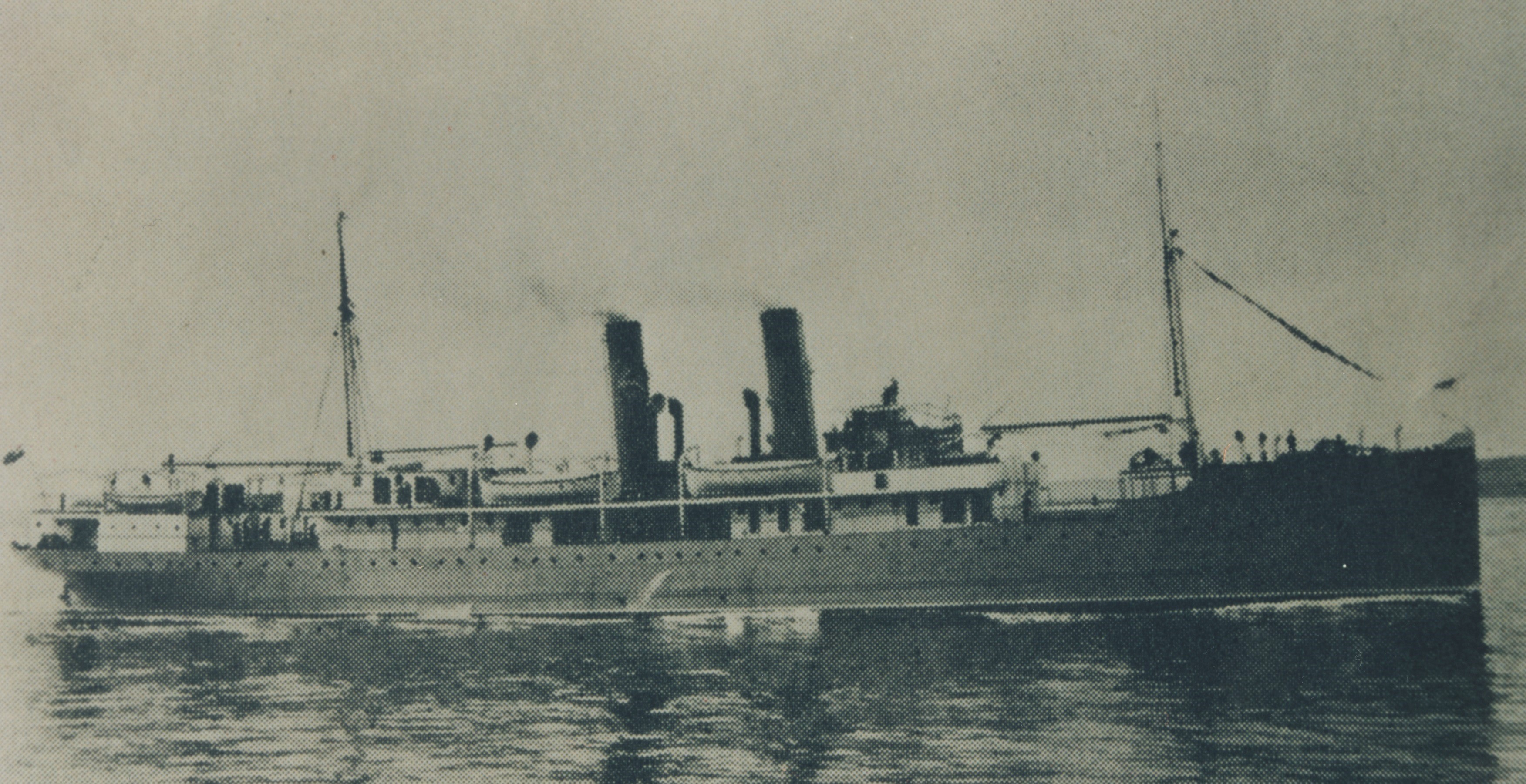
The Wollingbar in calm seas at Byron Bay (Source – EJW – RTRL)
Early in the afternoon of Saturday 14 May 1921 the Wollongbar was tied up alongside the old jetty about 200 metres offshore. It had finished loading cargo and was ready to board crew and passengers in time to depart for Sydney at 5.00pm. In the large waves, strong winds and low tide the ship’s keel began bumping on the seabed. Recognising the jeopardy the captain cast off to head into deeper, safer water. However, as the moorings were freed the ship grounded on a sand bar and turned broadside to the large waves. The captain valiantly tried to recover course and several times got the vessel’s bow turned back toward the sea but each time the ship encountered the sandbar, stalled, and was pushed closer to land. Eventually the wind, waves and current prevailed and the ship stranded in the surf on Belongil Beach. Its cargo of butter, bacon and bananas was either off loaded or jettisoned. The furniture and chattels were saved.
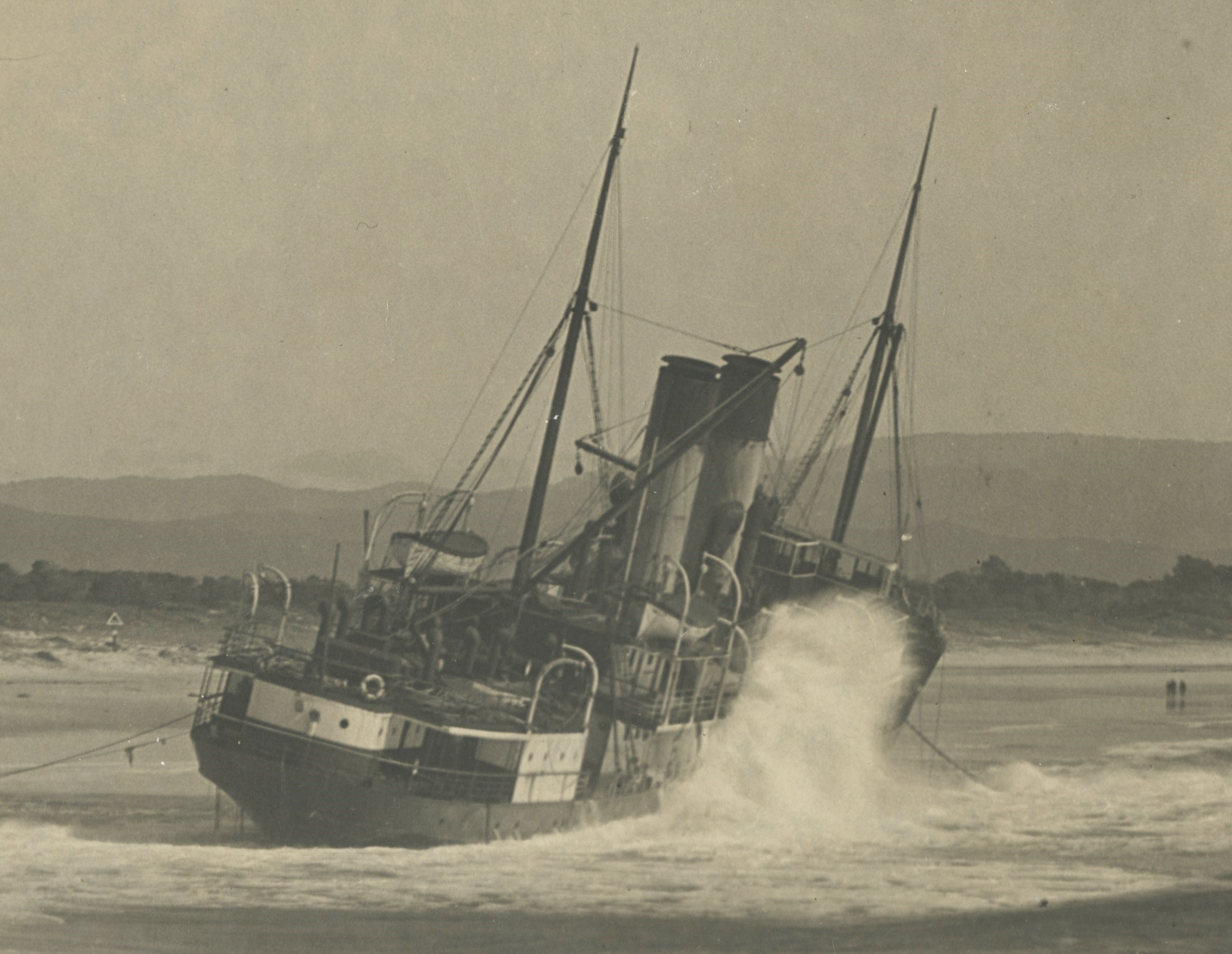
Firmly aground with waves breaking over. (Source – EJW – RTRL)
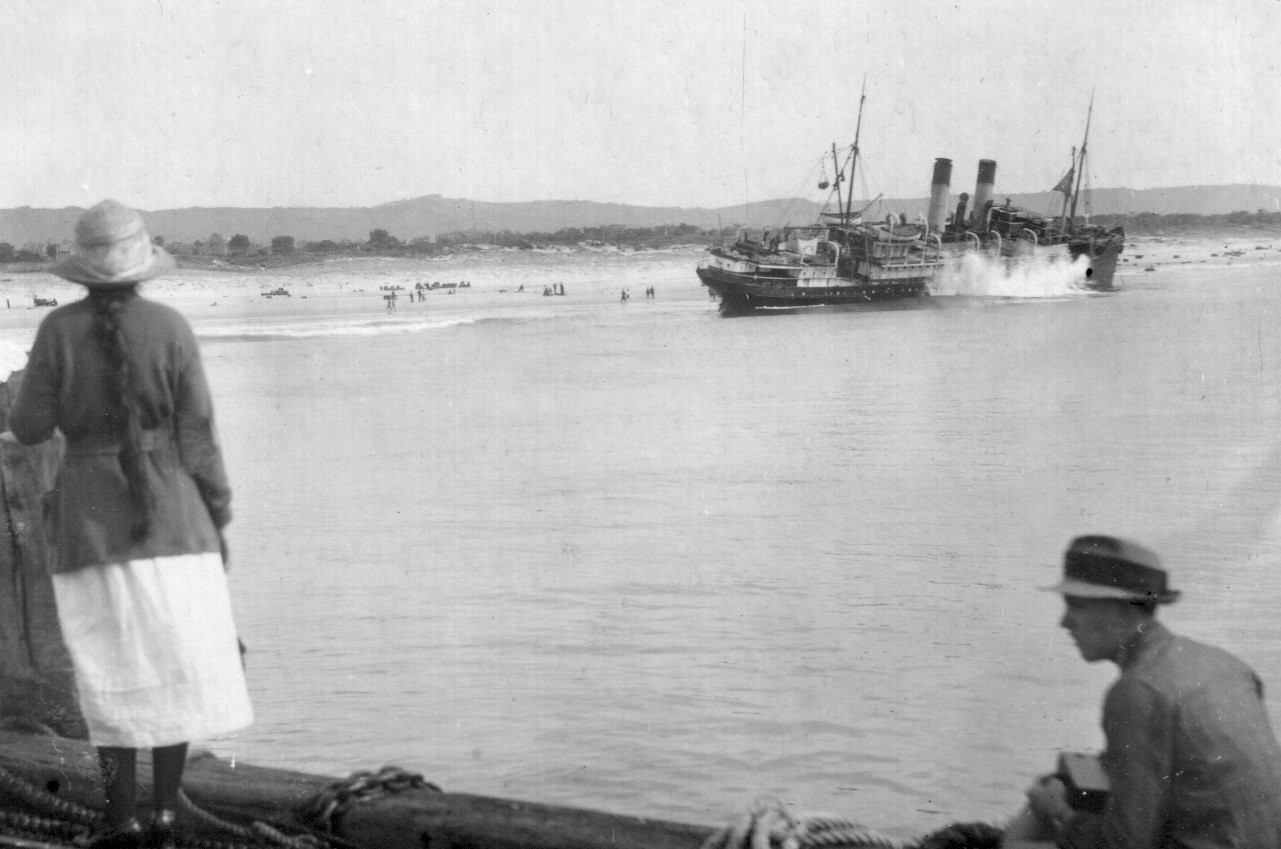
Visitors watching the salvage operations from the old jetty (Source – EJW – RTRL)
Despite several attempts to re-float the Wollongbar none was successful and the wreck was sold for salvage. The abandoned hull, boilers, rudder bar and tiller were all that was left. The rudder bar and boilers are often visible, and in between large storm waves the hull can be glimpsed. No lives were lost but for Byron Bay a crucial link with the outside world was gone. The outline of the hull can still be seen through calm seas from the air.
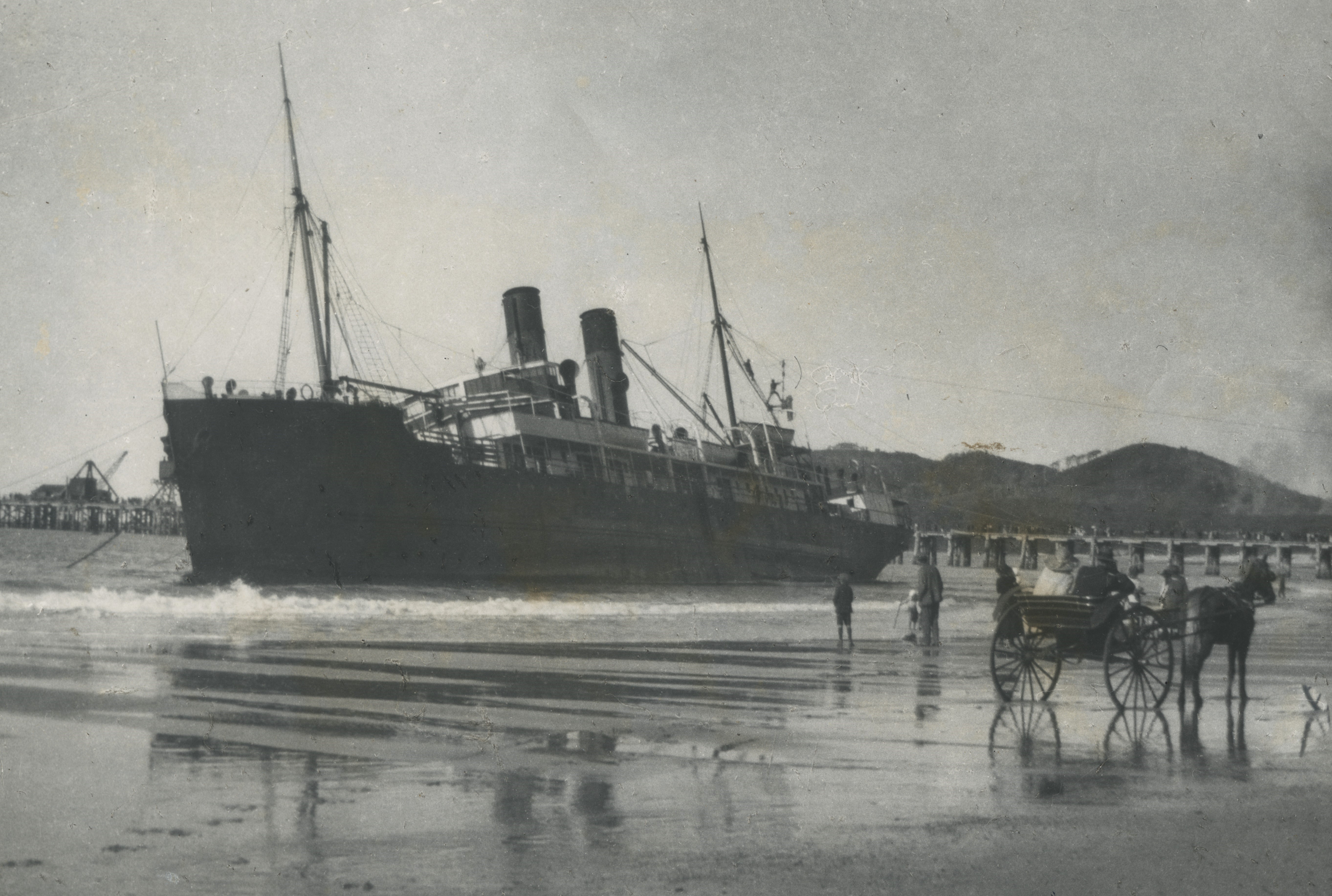
Onlookers watching ship’s furniture being unloaded. (Source – EJW – RTRL)
However, so vital was the shipping capacity lost an almost identical ship, the Wollongbar II was built and made its maiden voyage to Byron Bay on 11 January 1923. It continued weekly service between Byron Bay and Sydney until torpedoed and sunk by a Japanese submarine on 29 April, 1943.
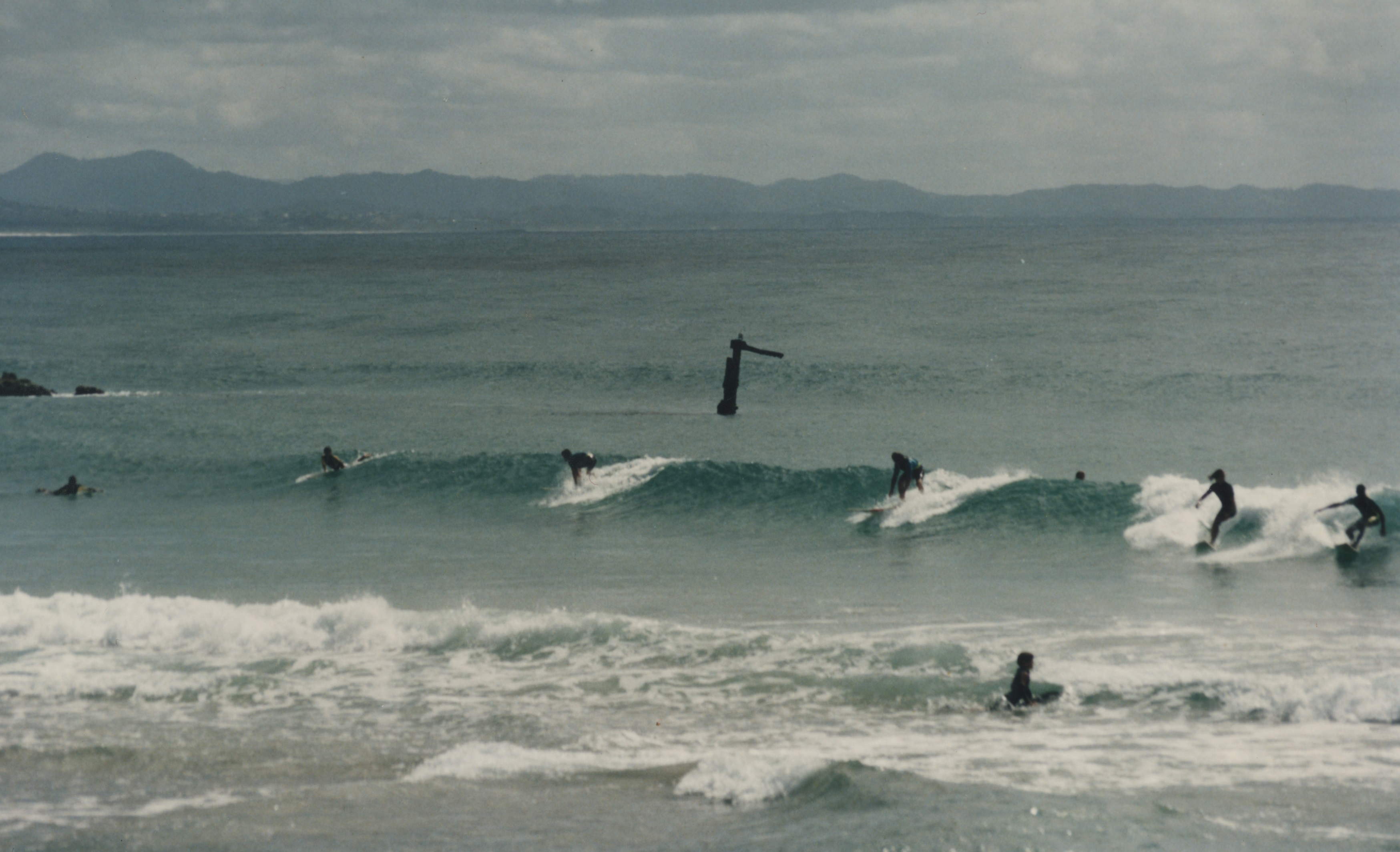
Surfers enjoying their work near the Wollongbar wreck (The Wreck). (Source – EJW – RTRL)
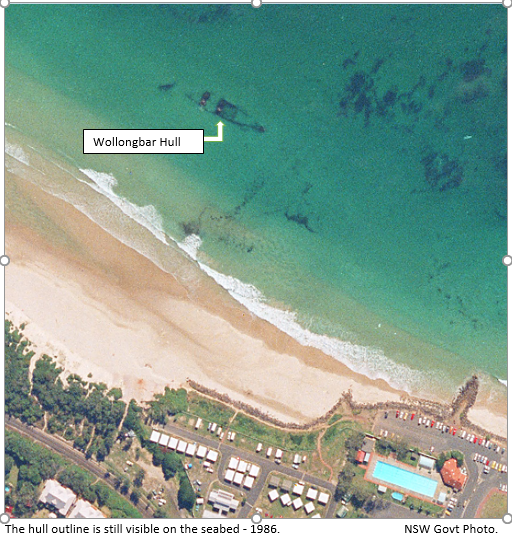
SINKING OF THE TASSIE III
There was one ship sunk in Byron Bay during WWII. It was the Tassie III, a 120 tonne steel ship requisitioned by the US Army and carrying condemned ammunition. It came into Byron Bay on the night of 8 June 1945 to anchor from a storm. During the night the ship dragged its anchor and beached. On the following high tide the ship re-floated and washed up against the “old jetty”. As the weather became rougher the Tassie III broke some of the jetty piles. The stumps of the piles penetrated the hull and the vessel sank. The wreck was inspected and it was decided that there was no likelihood of the cargo being exposed or thrown up on the beach. However, salvage operations commenced in February 1946 spurred on by complaints from locals that ammunition shells were breaking up off the beach. Most of the ammunition was removed during salvage. The ship and the remaining ammunition was blown up where it lay.
Although no crew of the Tassie III were killed, there was a sad sequel to the wreck as several young boys were injured when munitions they had taken from the ship exploded.
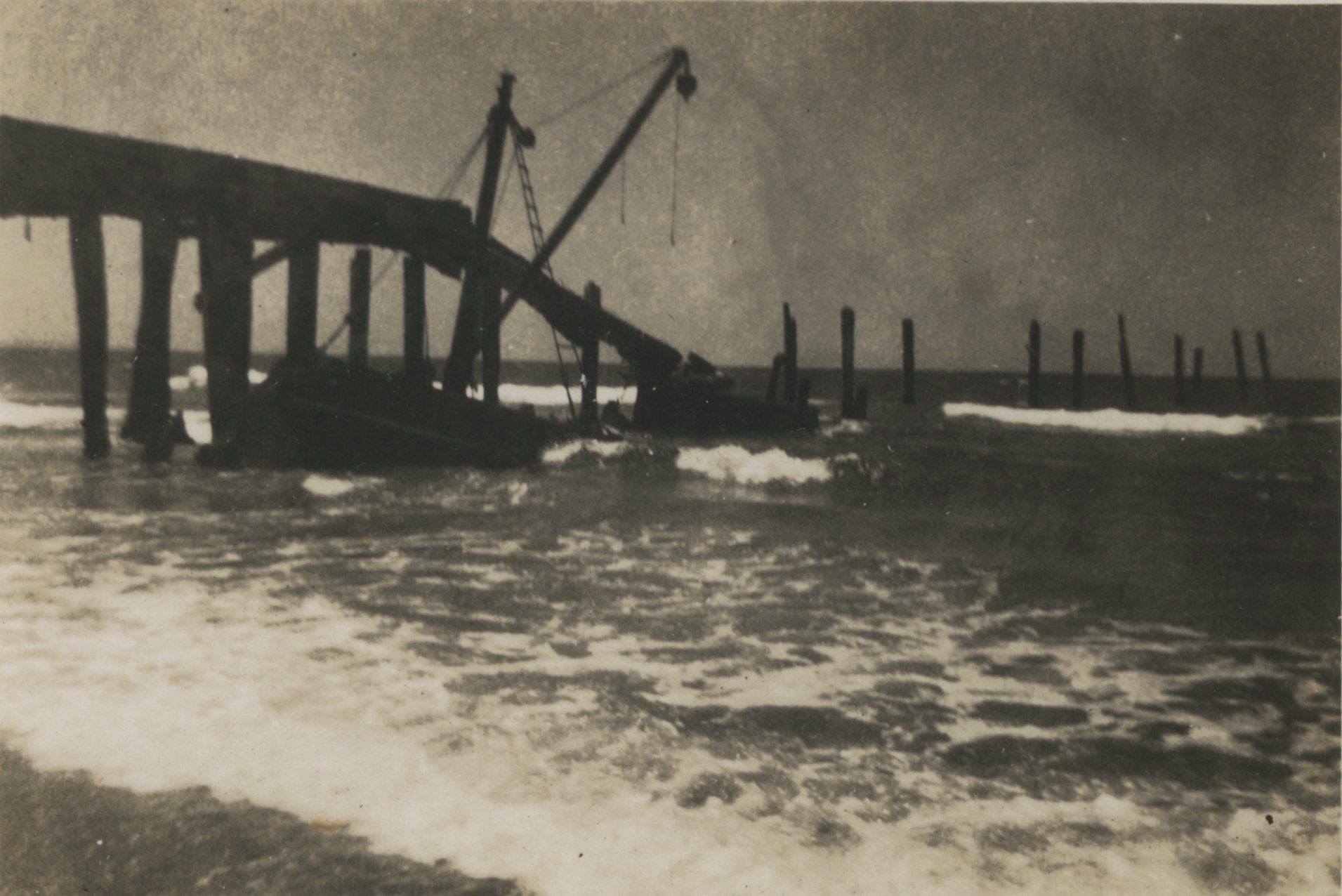
Wreck of the Tassie III against the old jetty in 1945. (Source – Byron Shire News)